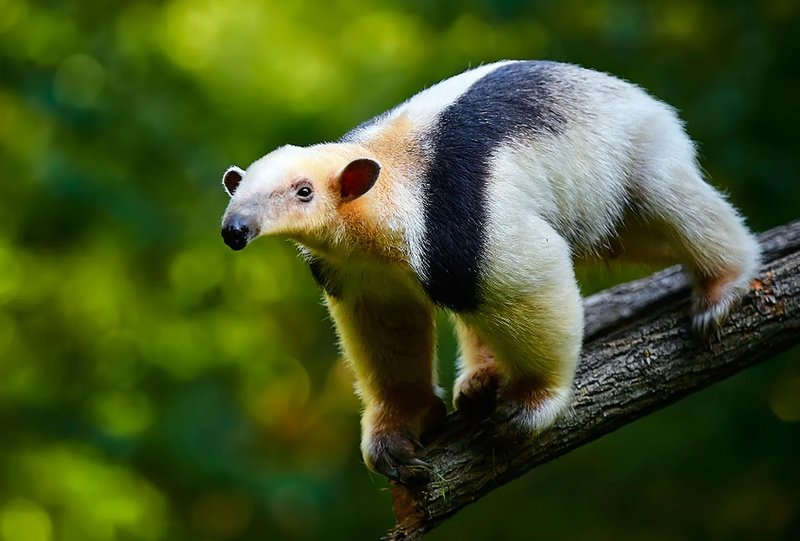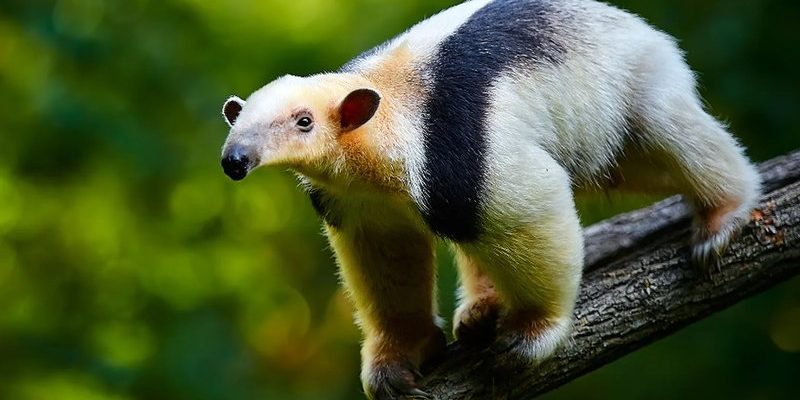
Honestly, anteaters aren’t just the quirky animals you see in cartoons; they play a vital role in their ecosystems. Not only do they control ant and termite populations, but they also help maintain the health of their habitats. You might be wondering how they eat, how they behave, or even what sets them apart from other mammals. Let me explain!
1. There Are Four Species of Anteaters
Anteaters belong to the suborder Vermilingua, meaning “worm tongue.” There are four distinct species: the giant anteater, the silky anteater, and the two species of Northern and Southern tamanduas. Each species has its own unique adaptations and habitats, which is fascinating when you think about how they’ve evolved over time.
– Giant Anteater: This species can grow up to 7 feet long, including its tail! They’re mostly found in grasslands and deciduous forests across Central and South America. With their long snouts, they’re expert ant hunters.
– Silky Anteater: Much smaller than its giant counterpart, this cuddly creature is about the size of a cat. They mostly live in tree canopies and are known for their silky fur, which helps them blend into the foliage.
– Northern and Southern Tamanduas: These anteaters are smaller and more agile than the giant anteater. They have prehensile tails that help them climb and navigate through trees.
Each of these species has adapted to its own environment, showcasing a variety of characteristics that make them fascinating in their own right.
2. Anteaters Have No Teeth
Here’s the thing: anteaters don’t have any teeth. Instead, they have long, sticky tongues that can be up to 16 inches long. They use their tongues to lap up ants and termites, which they find by tearing apart mounds and logs.
This lack of teeth might seem strange, but it actually suits their diet perfectly. Anteaters consume thousands of ants and termites daily, and their tongues are optimized for this job. When they find a nest, they flick their tongue in and out rapidly, allowing them to catch their prey without needing teeth for chewing.
– Fun Fact: Their tongues are actually covered in tiny spines called papillae, which help grip the insects as they eat. It’s like having a natural spoon built into their mouths!
3. They Have Unique Adaptations for Eating
To further assist in their eating habits, anteaters have several adaptations. First, they have incredibly strong forelimbs equipped with massive claws. These claws are crucial for digging into ant hills and tearing apart logs. When they find their favorite buffet, they can dig or break apart structures with impressive force.
Also, their snouts are specially designed to help them detect ants and termites through their excellent sense of smell. They can sniff out a meal from quite a distance away. You might say their noses are like a superpowered radar system for finding food!
– Did You Know? Anteaters can consume up to 30,000 insects in a single day. That’s a serious appetite!
4. Their Lifestyle is Mostly Solitary
Anteaters are typically solitary animals. They usually prefer to roam alone, seeking food and shelter without the need for social interaction. The only time you might spot more than one anteater together is during mating season or when a mother is with her young.
In their natural habitats, these animals are more active during the day, though some species may be nocturnal. They’re equipped to thrive in diverse environments, from open grasslands to thick forests. Given their solitary nature, you’ll rarely see them in groups unless it’s a mother with her baby, which can be a heartwarming sight to witness.
– Fun Moment: Imagine walking through a forest and spotting a mother anteater gently guiding her little one through the underbrush—sweet, right?
5. They Have a Strange Way of Cooling Off
Anteaters have an interesting method for regulating their body temperature. Since they primarily inhabit warm climates, they’ve developed behaviors to help them cool off. Unlike many mammals, anteaters don’t sweat or pant. Instead, they rely on resting in the shade during the hottest parts of the day.
When the temperature rises too much, they find a cool spot and rest until it gets cooler. This behavior is crucial for their overall health and helps them conserve energy. It’s nature’s way of ensuring that these creatures don’t overheat while they search for their next meal.
– Tidbit: You might notice them lying flat with their legs stretched out, which is their way of keeping cool while looking pretty adorable!
6. Anteater Mothers Are Caring
Anteater mothers show a deep sense of care for their young. After a gestation period of about six months, they typically give birth to a single offspring. These babies are born with their eyes closed and rely on their mothers for protection and nourishment.
During the first few months of life, the mother carries her baby on her back as she forages for food. This not only keeps the baby safe but also allows it to learn about its surroundings. As the young anteater grows, it gradually becomes more independent.
– Heartwarming Note: It’s sometimes said that these babies look like tiny versions of their moms, riding along and exploring the world together.
7. They Play an Important Role in Ecosystems
Anteaters are more than just cute creatures; they play a crucial role in maintaining the balance of their ecosystems. By controlling ant and termite populations, they help prevent overpopulation. This, in turn, supports the health of plant life and promotes biodiversity.
Their digging activities also aerate the soil, which can improve the health of the forest floor. As they break apart ant hills and nests, they create habitats for other species, contributing to the overall health of their environment.
– Example: Think of them as nature’s pest control agents! By keeping insect numbers in check, they help ensure a thriving ecosystem.
8. They’re Surprisingly Fast
Despite their lumbering appearance, anteaters can actually be quite fast when they need to be. They can run up to 30 miles per hour (48 kilometers per hour) over short distances, especially when they feel threatened. This ability helps them escape predators like jaguars and large birds of prey.
Their long legs are built for sprinting, allowing them to cover ground quickly. It’s fascinating to think about how such a seemingly slow-moving animal can unleash a burst of speed when necessary!
– Imagining the Moment: Picture an anteater darting away from danger, its long tail trailing behind like a flag—pretty impressive!
9. Unique Communication Styles
Anteaters have their own way of communicating, using various sounds and body language. While they aren’t particularly vocal animals, they do use huffs and snorts to express themselves. This is especially true during mating season, when males may demonstrate their interest through elaborate displays.
They also rely on body language to convey their emotions. For instance, a stressed anteater might fluff up its fur or adopt a defensive posture. It’s interesting to consider how these subtle signals help them navigate their relationships and environments.
– Cultural Reference: Think of anteater communication as a silent film—full of expressions and movements that tell a story without any spoken words.
10. Conservation Status of Anteaters
Unfortunately, not all anteater species are thriving. The giant anteater, for example, is classified as vulnerable due to habitat loss and hunting pressures. As urban development encroaches on their natural habitats, these creatures face increasing challenges in finding food and shelter.
Conservation efforts are underway to protect anteater populations and their habitats. By supporting organizations that focus on wildlife preservation, we can help ensure that these unique animals continue to roam the Earth for generations to come.
– Call to Action: If you’ve connected with the world of anteaters through this article, consider learning more about conservation initiatives. Every bit helps!
In conclusion, anteaters are much more than just interesting animals to look at; they are crucial players in their ecosystems. From their quirky eating habits to their caring nature, these creatures truly embody the wonders of wildlife. So, the next time you think about anteaters, remember these ten fascinating facts that highlight their uniqueness and importance in the animal kingdom.

